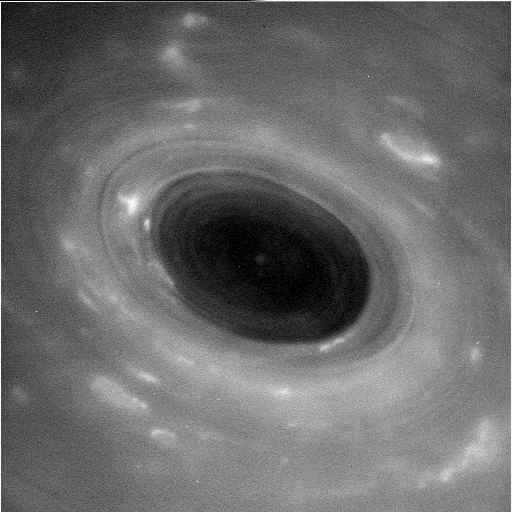On 26 April, NASA’s Cassini spacecraft became the first man-made object to successfully travel through Saturn’s rings. Cassini is now in the process of sending images back, revealing the most detailed view of Saturn’s atmosphere ever seen.
Launched in 1997, Cassini has been spending the last 13 years orbiting Saturn and has found seven previously undiscovered moons, as well as accumulating vast amounts of information on the environments of these moons. One of the most exciting of these is Titan, a moon found to have liquid methane and ethane—the only place in our solar system other than Earth to sustain liquid on its surface.
Cassini was able to travel through Saturn’s rings by shielding itself with the dish used for communication to Earth, making it unable to communicate with scientists back at NASA’s HQ for a nervous 20 hours. With the craft travelling at 77,000 miles per hour, even the smallest dust particles predicted to lie in the region between Saturn and its rings could have catastrophic consequences if it were to hit a sensitive area of the spacecraft.
However, Cassini’s Radio and Plasma Wave Science (RPWS) instrument was kept outside of the protective antenna, allowing for Cassini to record the frequency and impact of the particles hitting it. This data was then converted into an audio format to create sounds that represent the collisions that occurred as Cassini navigated through the region between Saturn and its rings.
Through analysis of the data, it was found that Cassini did not encounter any particles bigger than particles of smoke. This came as a surprise to the RPWS team, who were expecting much more of a turbulent ride for the spacecraft.
“The region between the rings and Saturn is ‘the big empty,’ apparently,” said Cassini Project Manager Earl Maize, in a press release from NASA’s Jet Propulsion Laboratory. “Cassini will stay the course, while the scientists work on the mystery of why the dust level is much lower than expected.”
By successfully navigating through Saturn’s rings and entering the region between Saturn and its rings, Cassini begins the final stage of its almost 20 year expedition—the Grand Finale. The Grand Finale brings with it the end of Cassini, with the spacecraft scheduled to dive into Saturn’s atmosphere on September 15th, 2017.

View more images of Saturn taken by Cassini by visiting https://saturn.jpl.nasa.gov/


